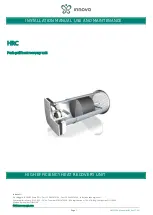
OUTPUT PROBLEMS
Observe Safety Guidelines detailed in the beginning of this manual.
PROBLEMS
(SYMPTOMS)
POSSIBLE AREAS OF
MISADJUSTMENT(S)
RECOMMENDED
COURSE OF ACTION
If for any reason you do not understand the test procedures or are unable to perform the tests/repairs safely,
contact the Lincoln Electric Service Department for technical troubleshooting assistance before you proceed.
Call 1-888-935-3877.
CAUTION
The weld output varies
abnormally. Auxiliary voltage is
normal.
Check welding cables for
damaged or poor connections.
Welding cable may be
excessively long, too small, or
coiled. Try using a set of short
test cables of adequate size.
If a remote current control is
being used, try switching to local
control. The remote current
control may be faulty.
The engine may not be
maintaining steady RPM. Make
sure there is an adequate supply
of clean, fresh fuel. Replace
fuel filters if necessary. Have
engine serviced by a qualified
engine technician.
Check and, if necessary, perform
the
Brush and Slip Ring
Service Procedure.
Perform the
Welding Generator
Brush and Commutator
Inspection and Service
Procedure.
Perform the
Engine RPM
Adjustment Test.
Check all the large weld current
carrying leads inside the
machine for damaged
conductors, insulation, and poor
connections.
Perform the
Output Control
Unit Inspection and Service
Procedure
.
Check the wiring that connects
the exciter, diode bridges,
rheostat, remote/local switch,
polarity switch, and the shunt
coils. Check for damaged
conductors, insulation, and
connections.
Check Job Selector rheostat,
replace if necessary.
Check remote/local switch.
Replace if necessary
TROUBLESHOOTING AND REPAIR
F-6
F-6
SAE-400 SEVERE DUTY
Return to Section
T
OC
Return to Section
T
OC
Return to Section
T
OC
Return to Section
T
OC
Return to Master
T
OC
Return to Master
T
OC
Return to Master
T
OC
Return to Master
T
OC
















































